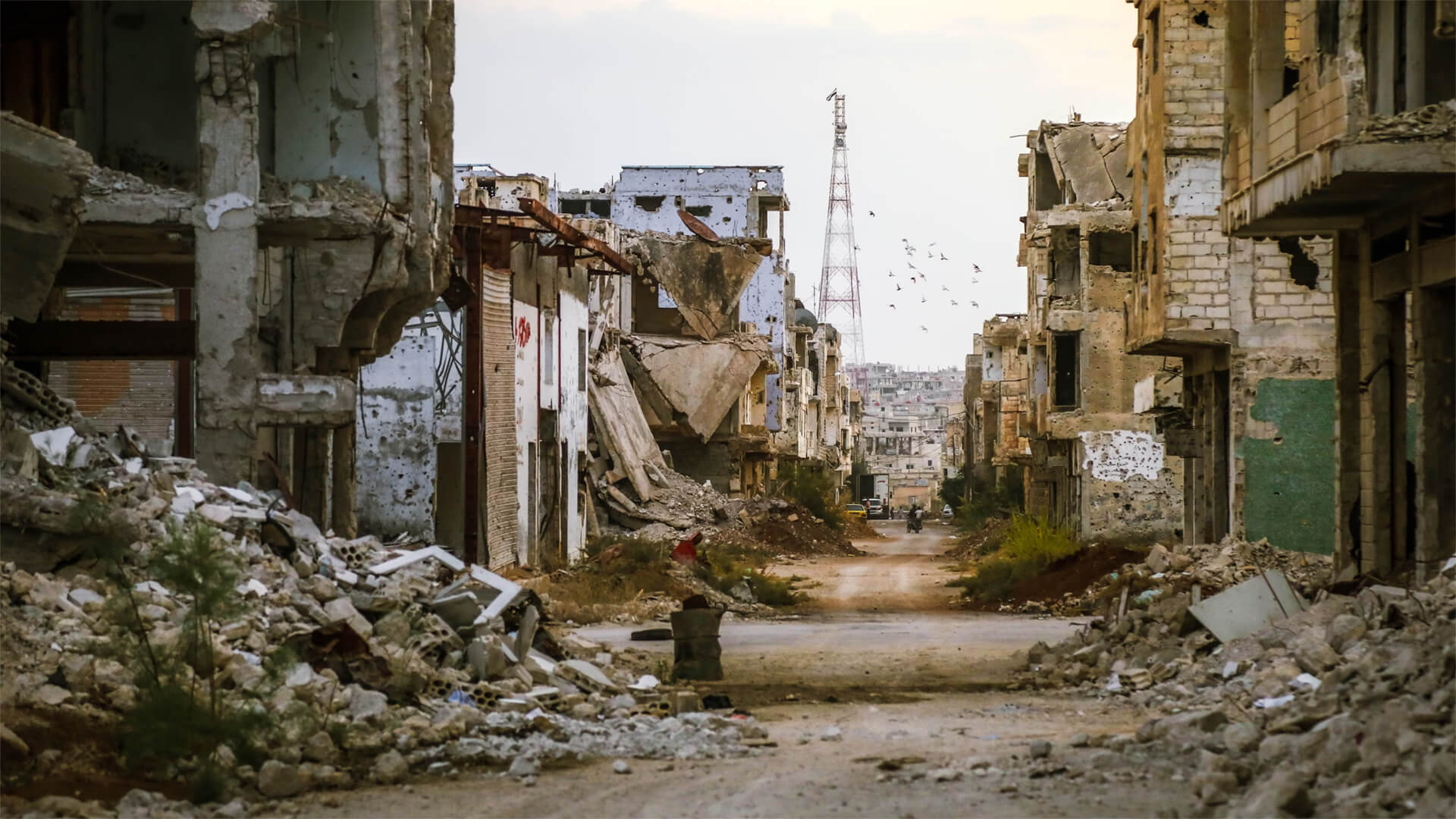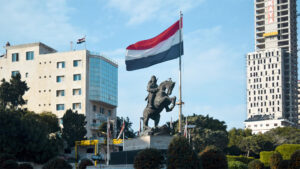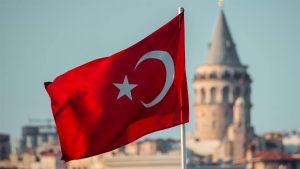A New Twist in the Syrian Civil War
Syria is back in the headlines as Hayat Tahrir al-Sham (which is basically a rebranded Sunni militant group) has added some gasoline to the civil war fire by capturing the city of Aleppo.
Minority coalitions have historically ruled over Syria’s Sunni majority, including Assad’s Alawite-led regime. But that’s all changing. As external supporters like Russia and Iran get distracted, Assad’s exposure will dramatically increase. And if the US shifts policies to support opposition groups, we could see some changes coming down the pipe in Syria.
As Assad’s regime grows increasingly isolated, conflict in Syria will likely intensify and instability will grow. So buckle up…
Friday’s Update on Syria…
Conditions on the ground in Syria are shifting quickly, with rebels poised to advanced toward the critical regime-held city of Homs.
Here’s what we’ll be watching for this weekend as the Assad regime mounts what could very well be its final major defensive position in Syria’s decade-plus long civil war.
Syria Updates on Sunday
Peter recorded this video on the morning of 12/6, as insurgent fighters were moving through Hama on their way to Homs.
Events have definitely taken a turn for the worst for Assad, whose regime has not been able to count on the critical Iranian, Russian and loyalist support necessary to push back Hayat Tahrir al-Sham’s offensive.
With that said, the last chapter of the Assad family’s control over Syria (or Damascus and its environs) just means the Levant is going to see another phase of fractious, sectarian fighting. We feel like this video and its explanation of the Syria’s geopolitical reality is still incredibly informative and beneficial in understanding the region’s future.
We will continue to update on events as they unfold—Peter when he is able, and the rest of the team as needed. -ZoG
Nothing in the Middle East is easy, and Syria is not exception.
Its fragmented dessert-and-mountain geography has allowed for roughly a dozen major ethnic and religious groups to carve out their own independent fiefdoms over the last few centuries, often times built up around a significant trade route, a vital water source or for the luckiest, both.
The Assad regime is facing the most significant threat to its already-tenuous hold on power in years, and we may very well be seeing the end of the Iranian-backed Alawite regime in Damascus.
But even if Assad and the Alawites lose, it will be difficult to determine who will actually win. If anything, we are most likely to see the beginning of a second Syrian Civil War, as the various tribal and religious groupings of the Sunni Arab majority vie for dominance amongst themselves, and seek to co-opt or crush the region’s many, many religious and ethnic minority groups.
Turkey’s Future and What to Focus On
Turkey has a lot of things going for it: a stable, or even strong, demographic profile, a burgeoning industrial base and an impressively unified political structure. Not too shabby for what was once the most coup-prone member of the wider US alliance structure.
It’s not all rosy for Ankara, though. Recent political decisions over monetary policy have led to some struggles with inflation, and being in the center of the world means you risk being surrounded by problems: Turkey not only borders Iran, but is also just a short hop across the Black Sea from the Ukraine war, and is sandwiched between both the Balkans and the Caucuses. To say nothing of the current… excitement happening in the Levant along its southern border.
In fact, Turkey’s biggest challenge in hefting its geopolitical weight will be having the strategic discipline and foresight to pick which arena it wants to play in. If we look to history, the Ottomans expanded into southeastern Europe—present day Greece, Romania and Bulgaria—before moving into the Levant and Middle East. (While many think of the Ottoman Empire as an Eastern empire because of the religious leanings of the ruling elite, the Ottoman Empire only made meaningful expansions beyond Turkey’s current borders in the latter half of its history. Its core territories were always the Bosporus and immediate surrounds, i.e., Europe.)
Turkey is a capable geopolitical player, and growing stronger every day. But it cannot project power everywhere along its borders at once. While many in Europe (and Russia, and the United States) might hope and expect Turkey to be a bigger regional player in the Middle East, the strategic gains there are ultimately limited. The Turks could very well see their greatest future successes where their Ottoman forebears did: the eastern borderlands of an [aging] European core
Here at Zeihan on Geopolitics, our chosen charity partner is MedShare. They provide emergency medical services to communities in need, with a very heavy emphasis on locations facing acute crises. Medshare operates right in the thick of it, so we can be sure that every cent of our donation is not simply going directly to where help is needed most, but our donations serve as a force multiplier for a system already in existence.
For those who would like to donate directly to MedShare or to learn more about their efforts, you can click this link.
Transcript
Hey, everybody. Peter Zeihan here, coming to you from Colorado. It is the 2nd of December. The big news in the Middle East over America’s holiday break for Thanksgiving was that an opposition group by the name of Harriet Tahrir al-Sham—and yes, if something happens in your corner of the world, you can look forward to me mispronouncing it—
Harriet Tahrir al-Sham has captured the city of Aleppo and is moving on towards the core of Syria. Let’s hit this from a geographic point of view and then from a policy point of view.
First, geographic. The bulk of the population in Syria is to the east of the Lebanon and Anti-Lebanon Mountains in a corridor that goes north-south from the Turkish border to Damascus. Basically, these are a combination of oasis cities and cities that are on rivers, so these are some of the very, very few parts of the country where you can actually grow food. Yes, yes, yes—you’ve got the Fertile Crescent and the Euphrates and all that.
But the Euphrates floodplain is very, very narrow, in some cases just a few miles end to end. So it’s never been an area that’s been able to generate a sustained civilizational impulse or create an empire. Whereas this corridor here has always been populated. In fact, it’s one of the most consistently populated areas on the planet going back to antiquity.
If you move to the west into Lebanon and the Syrian coast, you’re on the other side of the mountains, and so that’s where you get a lot more minorities, whether they be Druze, Shia, or Alawite. Anyway, this core has always been vastly, super-majority populated by Sunni Muslims. Usually, what happens in Syria is all the other groups gang up on the Sunni Muslims.
The current government of the Assads is an Alawite-led group. Basically, you’ve got a coalition of small minorities that have banded together to avoid being destroyed by the Sunni Muslims. When the civil war broke out in Syria—this was about 15 years ago now—you basically had the Sunni Muslims, who are the super-majority, rising up, rejecting minority rule, and trying to reestablish themselves.
The fact that Sunni Muslims form the backbone of most of what we would consider Islamic terror groups, such as ISIS, meant that the terror groups had a lot of willing collaborators throughout the majority population. What’s going on now is this new group is basically a rebranded old group and is making another go of it, way too soon if they’re going to be successful.
In addition to Aleppo, you’ve got Homs, Hama, and of course, Damascus itself. There’s a long way to go, but a few things have changed.
Number one, the only real reason why the Syrian government is still in play is because the Russians intervened forcefully over ten years ago and propped them up. Well, Russian support is not what it once was. The Russians are a little occupied over in the Ukraine situation, so it’s not clear that Syria is going to have the same degree of support that they once had.
The second degree of support is Iran, but with the Trump administration incoming, that’s probably going to be dialed back a little bit.
The third is, indirectly, the United States. After 9/11, the United States decided that we didn’t like Sunni Arab Muslim militant groups and went to town on them in places like Iraq, Afghanistan, and Syria. The lingering American commitment to the Syrian civil war has been about breaking groups that are ISIS or ISIS-affiliated. This new group is just a rebranding of what used to be called the Al-Nusra Front—Nusra, Nusra, or something like that anyway.
Which brings us to policy.
The United States has a long history of backing the smaller group against the larger group, no matter who’s involved or where it is. The idea is that if regional powers are tied down with local affairs, they can’t consolidate, become bigger and bigger, become imperial, and eventually threaten the United States in the Western Hemisphere.
It’s something we’ve been doing at least since the early 1800s, from our on-again, off-again indirect interference with the Napoleonic Wars all the way up to the current day. Certainly, we did a lot of this during the Cold War.
Now, besides the fact that we have a changing of the guard in Washington, we also have a different situation in Syria. We certainly don’t like the Syrian government—it’s genocidal, dictatorial, all the things you’re not supposed to like—and it’s being backed by all the traditional powers that have been hostile to the United States.
There’s just one fly in the ointment: we now find ourselves against Russia, against Syria, against Iran, and against Islamic militants. If the United States were to change its mind on just one of those, all of a sudden, the game changes, especially when you consider how occupied the Russians and Iranians are about to be.
The group that is most likely to have a change in circumstance is going to be the Islamic militant groups—the former Al-Nusra group. The reason is pretty simple: the United States has a long history of backing Islamic militants against powers that we find more problematic.
We’ve done it for militant groups in the Iran space. We’ve done it in Afghanistan against the Soviets. We’ve done it with the Chechens in Russia proper. To think this is going to be the one exception where that’s convenient but isn’t going to happen is kind of a stretch.
The militants have already done us the favor of renaming themselves so they can be a fundamentally “new” group. If you think the US can’t or won’t do this, just keep in mind that we did it last time, and the time before, and the time before that, and the time before that.
One of the weird things we’ve seen in the last 15 years is that one of the strongest unofficial supporters of the Syrian government has been the United States, because we have removed from the equation the group that was most likely to overthrow Assad.
Expect to see a policy change—formally or informally—in the months ahead, and expect that to reignite the Syrian civil war in a very big way. This time, the Syrian government will mostly be fighting on its own.
It can’t rely on the Russians—they’re occupied elsewhere. It probably can’t rely on Iran or Iranian-backed militant groups in the region, like Hezbollah in Lebanon, because the Israelis have now gutted them.
All of the traditional pillars of support the Assad government has come to rely on during the entire civil war are snapping right now, and things are about to get lively.
So watch this space. I’ll keep an eye on it for you.







